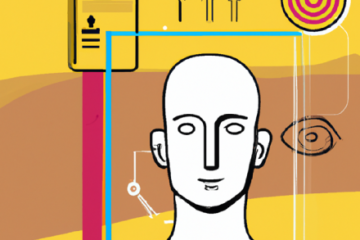Is empathy a part of your CX programme?
Is empathy a part of your CX programme?

A few years ago, if someone had told you that you’d be buying groceries online, and remote work would be the new normal, you’d have gotten a few raised eyebrows – and maybe some laughter. But online is what our world looks like right now. Processes have changed, and things we did offline have gone online. Digital is here to stay.
We may not know what a “normal” world looks like anymore, but we do know that there’s a marked increase in investing in people, in making sure they’re alright, and that customers are comfortable with online touchpoints.
When the pandemic hit us, customers looked to brands to show how business can be done, while also working towards creating a more conducive environment for all stakeholders involved in the changing world. In this scenario, empathy became a major factor of Customer Experience (CX).
Here are a few things your CX programme should have to ensure a more empathetic experience for your customers:
Training to handle crises
Touchpoints may have gone digital, but your frontline employees and your customers are still human. Humans who might be dealing with a lot of personal and professional issues. Now, more than ever, it’s important to provide training to your frontline employees to deliver an empathetic customer experience.
Online/offline data collection
Working remotely is now a reality for many organisations. After initial struggles of setting up processes to deal with changing hierarchical structures, companies are now accustomed to this dynamic.
Data collection is no longer what it used to be. While companies used to rely on offline data collection of feedback to improve customer experience, now it’s almost all being done remotely, or via digital touchpoints.
To enable more personalised experiences, businesses will have to change their perspective on how they look at data collection. They’ll also have to ensure that all online and offline engagements are recorded and stored for later analysis.
Accurate data
Things may have opened up with customers returning to stores, but many payments and purchases still occur online. Digital is a fast-moving medium, and data collection also happens at a fast pace.
Gathering feedback remotely is not only safer for the employee and the customer, but it’s easier and hassle-free. In this case, equipping front-line employees with accurate data can lead to real-time data interactions. It can give your CX the edge it needs when everyone is scrambling to get their digital ecosystem in place to not lose out on communicating with customers.
Consumers are going digital
E-commerce has become a boon in these times. If you have a need, chances are an app exists to fulfill the need. Customers are more comfortable than ever with online transactions – from ordering groceries, medicines, and daily essentials, to clothes and personal items. The shift in shopping trends remains skewed towards digital, even though physical retails stores and malls are open for business.
Not only is online shopping convenient and safe, but it also allows for one-click transactions, with service akin to customer service received at offline stores. Consumers have moved to digital interactions for an easier and more convenient service experience, and your CX programme must reflect and aid this behaviour.
Great CX starts with people
Even with the higher amount of digital transactions, the human element still remains – for internal as well as external stakeholders. In fact, customers are now familiar enough with the digital ecosystem that they also expect prompt service and grievance redressal.
Great CX starts with people. Therefore, training across all levels of the organisation to better understand customer grievances, and delivering as per the aligned business processes, is critical.
Contextual conversations have always been an essential part of a good CX programme. In current times, the context of the pandemic is behind almost every customer interaction.
Ask yourself: “how can I make my customer’s experience with my business smooth, easy and comfortable?” and “how can I ensure that my customer-facing frontline employees are equipped to deal with this new context?“
The answer to this is: empathy. By understanding that times are tough, but also realising the unique opportunity to stand out in the mind of the consumer by giving them a memorable experience.


